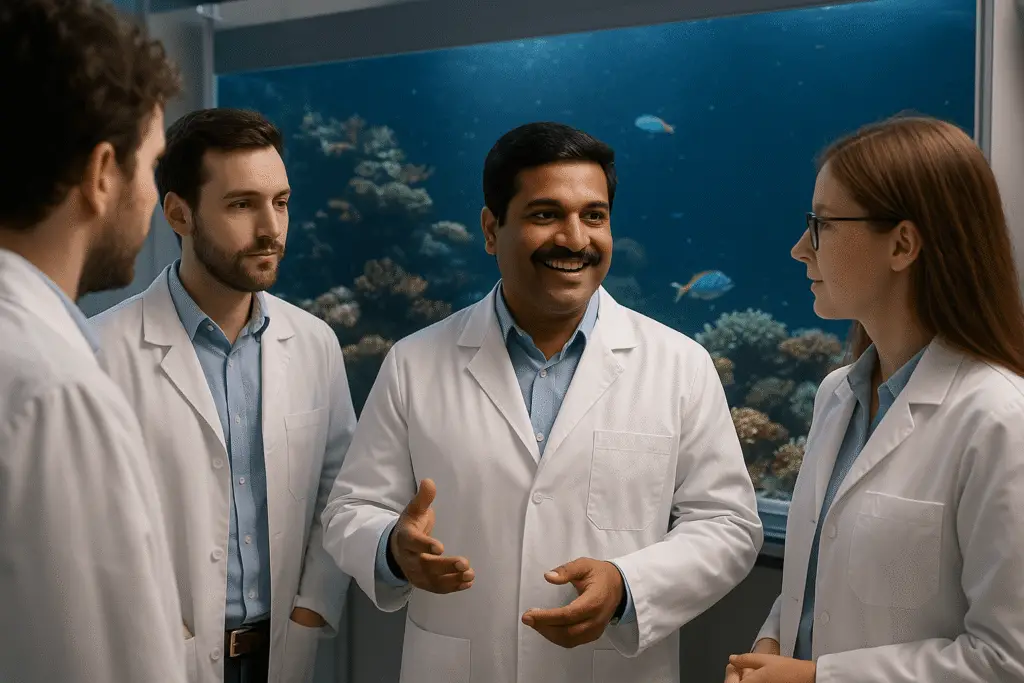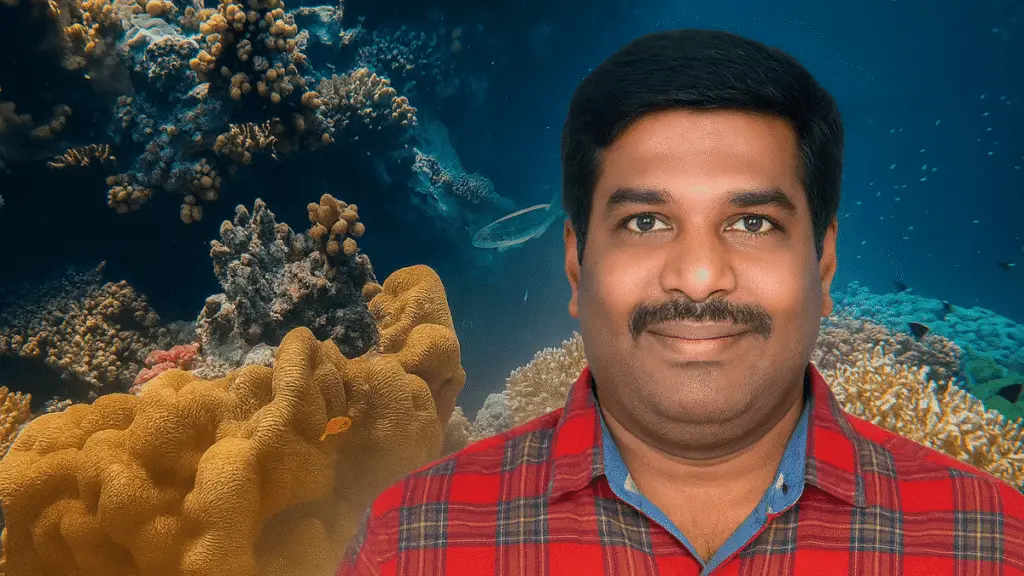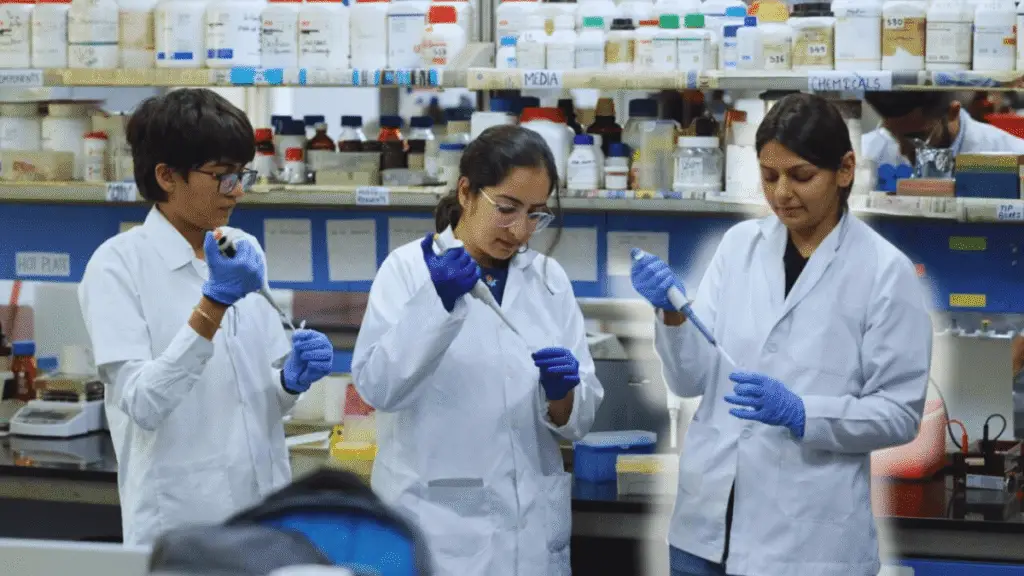Marine biodiversity is vital for the Earth, as it regulates the climate, food cycle, and oxygen levels, and overall life survival. Recent research shows alarming statistics on how human interference and climate change affect marine biodiversity.
An Indian scientist dedicated his entire career to understanding marine biodiversity, its significance and why it is important for life on Earth.
This is the story of renowned Indian Oceanologist Dr. Dineshram Ramadoss.
Key Topics:
Meet the scientist:
Dr. Dineshram Ramadoss is a senior scientist at CSIR-NIO (National Institute of Oceanography), Dona Paula, India. His area of specialization is in marine biotechnology, environmental proteomics, ecology and ecosystem functioning, Biogeochemistry and climate change.
As per Google Scholar data, he has published 40 peer-reviewed articles in national and international journals.
His major contribution is in understanding the ocean and marine life:
He conducted research in various domains around the ocean and marine life. This shows his keen interest in understanding the life within saltwater. His major research work is around,
Ocean acidification, understanding marine stress physiology, proteomics-based marine biology analysis, biofouling and marine surface interaction, deep-sea exploration and environmental DNA studies. In addition, his work also reveals the impact of marine pollution and the blue economy.

His latest research showed how marine biodiversity is affected:
Dr. Dineshram Ramadoss’s love for marine life is evident in his latest research paper, in which, instead of using conventional marine research tools and techniques, he used a novel genetic technique that does not harm any life form.
He used a technique called non-invasive eDNA analysis. In this technique, no animals or organisms are harmed during the research; instead, the sample is collected from seawater.
Marine organisms shed traces of DNA into the surrounding water in many ways. Dineshram Ramadoss and team collected seawater samples, extracted DNA from them and identified each DNA fragment.
If you want to know more about the process of DNA extraction, you can click the link and read our article.
They have collected water samples from 5 Lakshadweep sites and performed the “metabarcoding.” It is an eDNA (environmental DNA) based analysis where hundreds to thousands or even millions of DNA fragments, for different organisms, are identified in a single sequencing experiment.
They sequenced all the DNA fragments obtained from the samples using the COI (cytochrome oxidase I) mitochondrial gene fragment and assessed the biodiversity of the Lakshadweep sea.
Identified hundreds of marine organisms using a single water sample:
In this latest study, they found 64 metazoan taxa across six animal and nine algae phyla and 19 fish species. This present finding showed that reefs lacking human interference have higher biodiversity in comparison to reefs that have very high human interference activities.
This data is significantly important in understanding how human activities and interference, such as tourism, fishing, waste dumping, etc, negatively impact marine biodiversity.
Why is this research important?
The present research is significantly important in the scientific community, not only because of the outcomes but also due to the technique Dineshram Ramadoss and his team have used for the research.
The eDNA-based non-invasive metabarcoding has been assessed for the first time in India for marine research. This exceptionally good technique bypasses the need for traditional underwater surveys due to limitations such as observer bias, limited visibility, and difficulty identifying cryptic or larval species.
The Environmental DNA metabarcoding technique has the utmost accuracy, speed and precision.
The present research is eye-opening. Dr. Dineshram Ramadoss indirectly showed us the other side of the story, why our interference isn’t good for not only marine life but also for us.
Because, ultimately, this disruption leads to an imbalance in Earth’s ecosystem, food cycle and climate. And we are aware of the consequences, right?
Latest Story: This AIIMS Scholar is Investigating the Mother-Fetus Microbiome Link.
Future Direction:
The present research, published this year in the journal Frontiers, entitled “Unveiling Diversity and Uninhabited Reefs of the Lakshadweep Archipelago, India Using eDNA,” is a milestone achievement.
This research would lay the foundation not only to understand marine biodiversity but also biodiversity across other ecosystems, using a non-invasive, simple yet accurate genetic analysis technique.
We are hoping that Dr. Dineshram Ramadoss and team continue their exploration of ocean life and his story will inspire other scientists to pursue this field and contribute to making the planet safer for all forms of life.
Resources:
Bharath Subramanyam Ammanabrolu, and Ramadoss Dineshram. 2025. “Unveiling Diversity in Inhabited and Uninhabited Reefs of the Lakshadweep Archipelago, India Using EDNA.” Frontiers in Marine Science 12 (June). https://doi.org/10.3389/fmars.2025.1592429.


